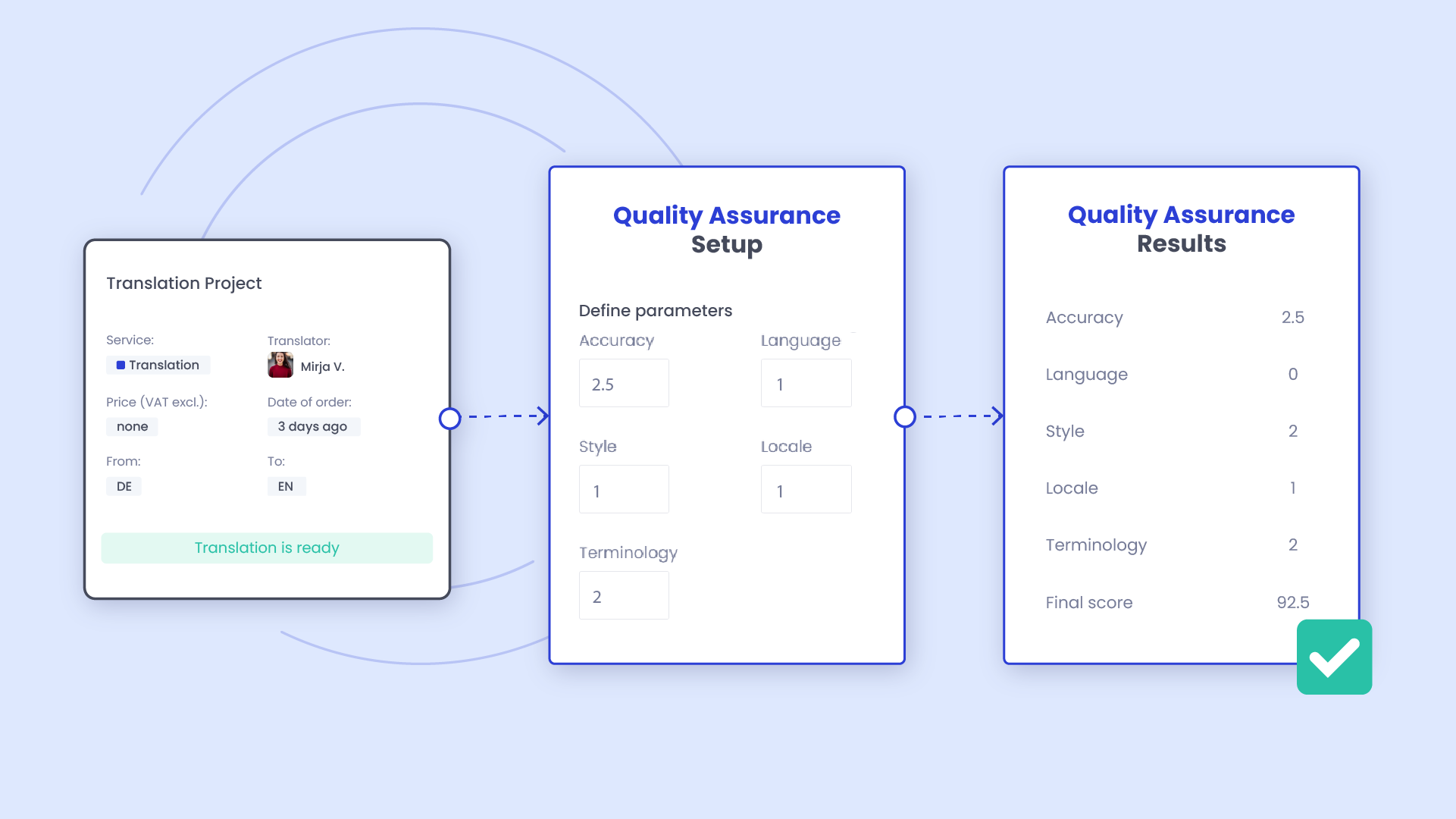Quality Assurance - How to Assess Translation Quality
Nov 25, 2022 5:58:49 PM | 3 min | TMS| Localisation strategy
Quality Assurance - How to Assess Translation Quality
It is not always easy to assess if your translator’s work actually lives up to your expectations, especially if you do not speak the respective language. While hiring a proofreader would be a way to tackle this issue, this can also be a costly and time-consuming method. Fortunately, there are other ways to measure the quality of your translator’s work. Read on to learn more about employing Quality Assurance methods as a valuable addition to your translation processes.
What is Quality Assurance?
Quality Assurance involves assessing the accuracy of translated content against the source text. If you are unsure of the quality of your translator’s work or you just want proof that it is as great as you believe it is, you can simply add this step to your translation process of choice. Thereafter, a second translator tests and evaluates a sample piece of a translation done by the initial translator. Employing a Quality Assurance step in your translation process will deliver valuable insights. Drawing on a translation quality scoring system, you can take the appropriate measures to ensure that your multilingual content lives up to your standards.
A good Quality Assurance will evaluate each translation for accuracy, terminology, consistency and clarity before delivering the result to you. Moreover, it is crucial that the linguist performing the analysis is native to the language at hand to be able to properly measure the quality of your translation.
Lastly, it is important to highlight the differences between Quality Assurance and proofreading. While proofreading refers to a second translator making edits and finalising the first translator’s content, Quality Assurance entails a second person carefully measuring the quality of the initial translator’s work. Both methods have in common that they include the four-eye principle where two linguists go over a piece of translated content. However, Quality Assurance provides you with a score to give you a clear indication of the original translation’s quality.
The benefits of Quality Assurance
Quality Assurance provides numerous benefits to businesses looking to expand into global markets.
- It helps ensure that translated content is consistent across multiple languages, which is important for maintaining brand identity and reputation in different countries.
- Additionally, it can help reduce costs associated with errors or inaccuracies in translations, as these mistakes can be caught at an early stage before they become costly problems down the line.
- Moreover, the right translation management software will provide you with an easy-to-use Quality Assurance tool that you can employ all by yourself without having to rely on an agency. By simply adding a Quality Assurance step to your translation workflow, the software will trigger the process for you.
- Finally, Quality Assurance helps build trust with customers by providing accurate translations that reflect their needs and expectations.
How Quality Assurance works
Quality Assurance typically involves a clear process designed to verify the accuracy of translated content against the source material. This process usually begins with a preliminary review of the translated document by a native-language speaker who checks for errors such as typos or incorrect grammar usage. Additionally, the linguist will determine if there are any discrepancies between the translated content and its source material regarding terminology, meaning, context, etc.
The EasyTranslate software makes it effortless for anyone to employ Quality Assurance. It provides Automation Workflows that let you determine all steps of your translation processes, such as human or machine translation, proofreading, Quality Assurance and more.
Once you added Quality Assurance to your Automation Workflow, the tool first lets you define a sample size of an existing translation. A second translator will then assess and rate this content. Translation errors get classified according to the type of error (eg. style, locale, accuracy, language and terminology) and weighted by their level of severity (minor, major, critical).
The final result of this error analysis comes in form of a score between 0 and 100. A Quality Assurance score of 100 would mean that the translation sample was flawless in every way. Any score in the high numbers should make you excited to have a competent translator as part of your team. In addition, the Quality Assurance provider has the opportunity to leave any other feedback or remarks. This helps to give you more qualitative insights into the quality of the translation.
While the best case scenario would be to always receive a perfect Quality Assurance score of 100, this is not realistic. If translation quality was always this perfect you wouldn’t even need to employ Quality Assurance in the first place. Therefore, if you are not satisfied with the score your original translator’s work received, you have the opportunity to contact them and take the appropriate measures yourself, or you can let us handle the further investigation and initiation of a proper solution.
Conclusion
Quality Assurance is an essential part of any successful translation workflow as it ensures that translations meet expectations and industry standards for accuracy and quality. By investing in a Quality Assurance step you find out if your translations live up to your standards, even if you do not speak the language. Once the high quality is established, you can rest assured knowing that your business’s international presence will be well-represented in every market you choose to target. The EasyTranslate software makes it convenient to employ Quality Assurance, so you can effortlessly get all the insights you need to improve your customer experience abroad.

 Dansk
Dansk
 Deutsch
Deutsch
 Dutch
Dutch
 Español
Español
 Français
Français
 Norsk
Norsk
 Svenska
Svenska




